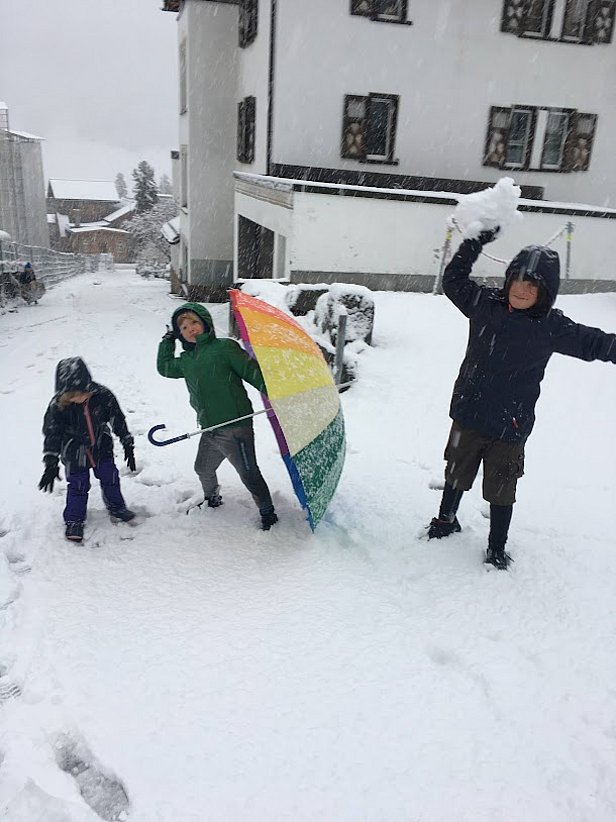09.09.2022 | Logbook
Author ¶
Ruzica Dadic is spending a year as a fellow in the Snow Physics Research Group. The snow researcher, who actually works at Te Herenga Waka—Victoria University of Wellington in New Zealand, took part in the MOSAiC expedition in 2019/2020. Her time at the SLF will mostly be spent evaluating the data obtained during the expedition. In this blog she charts the pitfalls faced by her and her family.
It's the morning of 31. October 2021. I just arrived in Davos at Martin's house after a long flight from New Zealand. Luckily our children are good travelers. My partner Huw is in Antarctica for fieldwork and will join us in Davos at the end of January. I only packed shorts and sneakers for the kids because that's what they wear in Wellington all year long. I expected to have about a month to get them Davos-appropriate winter wear. Little did I know that it would start snowing the next day and that my brave children would endure their first school and kindergarten visits with freezing legs and wet feet. But luckily, Davos is well equipped for shops that sell winter gear, so the rest of the first week goes quite smoothly. Even if some of my kids still refuse to wear long pants (it will be another month before they deem long pants acceptable), but at least they now have warm winter boots and they wear long underwear under the shorts.
Everything new in Switzerland ¶
The first month in Davos was a bit chaotic because everything was new, and there were a lot of logistics to take care of with three kids at three different "schools." However, the help and support we got from the colleagues at the SLF and teachers were beyond amazing, so we got into the new routines quite quickly. By Christmas, the kids didn't even grumble about starting school almost an hour earlier than at home. This exciting new adventure was too great to complain about anything for too long. Also, the presence of so much snow tripled our walking time from A to B because apparently, "snow is super exciting." I, of course, could not argue against that, so the kids came up with many ground-breaking theories about snow and the ice on the Albertibach. Maybe they should publish them someday.
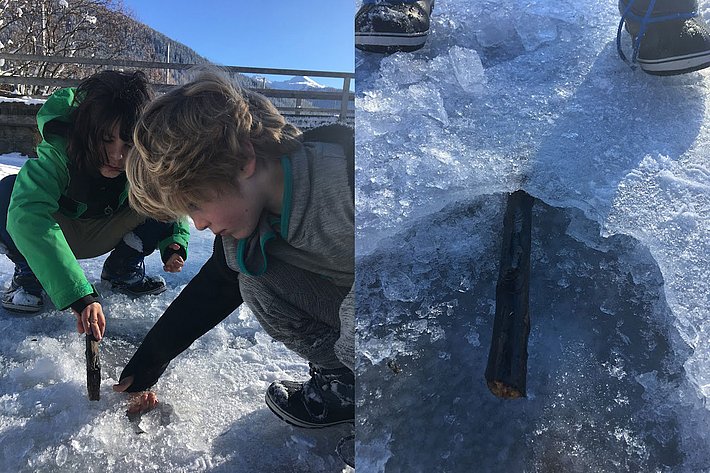
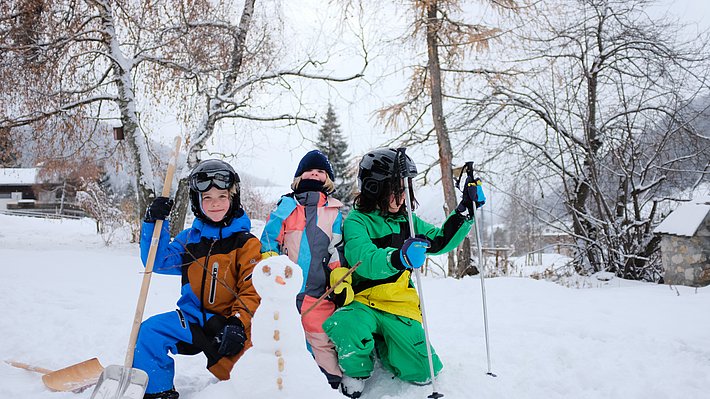
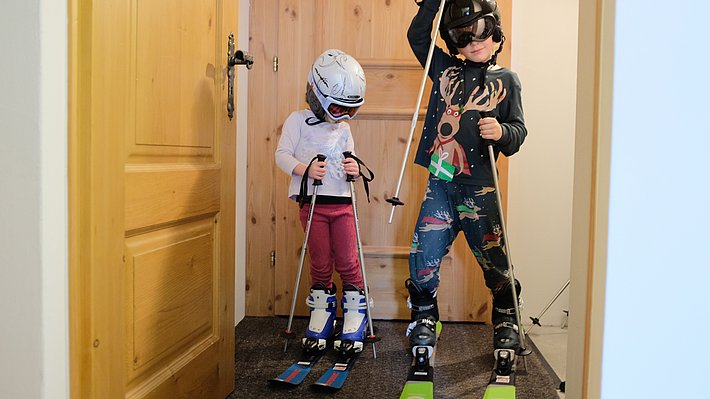
Digital elevation models from the Arctic ¶
The reason for my fellowship is to work closer with SLF colleagues on MOSAiC data. I was mainly working on generating high-resolution small-scales digital elevation models to determine surface roughness of snow. The small-scale surface roughness of snow is important for remote sensing retrievals of sea ice concentration and sea ice thickness. The results are exciting, especially because it's hard not to be fascinated by the large range of surface topographies of snow. The SLF MOSAiC team were already meeting on zoom twice a week since the end of the expedition, but it's nice to be reminded what a difference in-person communication makes. It's nice to be reminded that science often happens during coffee breaks, hallways, or team meetings rather than exclusively in scheduled meetings dedicated to a specific project.
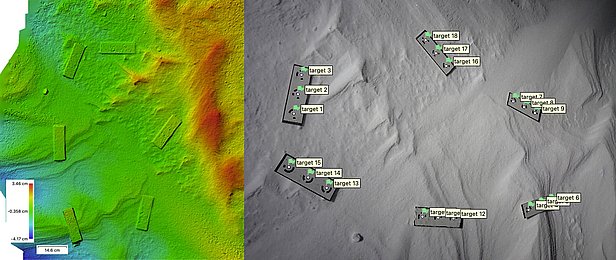
The real value of my fellowship is in the random conversations with people I meet during coffee and lunch, in the hallways, or on the road on the way to and from work. It's the inspiring discussions we have in the weekly group meetings. Such discussions, which at first may seem far from our current research, are critical for us to grow as scientists. I have always enjoyed spending time at the SLF, but my visits were often rushed and filled with sometimes challenging lab experiments. This fellowship allowed me to not only work more intensively with the unique MOSAiC dataset but also to foster new collaborations that will inspire my research in years to come.
